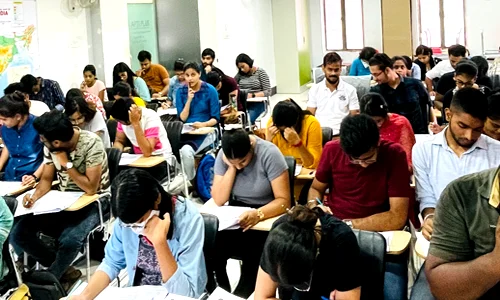



The emerging priorities of India’s banking sector for 2025–2035 centre on strengthening deposit mobilisation to support rapid credit expansion, especially by deepening outreach in rural and semi-urban areas. Banks are shifting focus toward high-growth segments such as manufacturing, infrastructure, and renewable energy, while expanding green finance through sustainability-linked lending and support for technologies like Small Modular Reactors. Financial inclusion remains a core objective, with schemes such as PM MUDRA, PM Vishwakarma, PM Surya Ghar, PM Vidyalaxmi, and KCC enhancing grassroots access to credit. Agriculture lending is being redesigned under the PM Dhan Dhanya Yojana to boost productivity in low-performing districts. At the global level, banks are strengthening their presence through platforms like GIFT City and the India International Bullion Exchange. A parallel priority is improving customer experience through multilingual digital platforms and faster grievance redressal, reflecting a shift toward more technology-driven and citizen-centric banking.
Click to View MoreIndia’s fintech sector has rapidly evolved through digital innovation, government support, and growing internet access—transforming payments, lending, and financial inclusion—while facing challenges like regulation, data privacy, and cybersecurity.
Click to View MoreStablecoins are cryptocurrencies pegged to assets like the dollar or gold to ensure price stability. They enable fast, low-cost global payments and support DeFi, but raise risks of financial instability and regulatory concerns.
Click to View MoreIndia’s UPI expands to Qatar via Qatar National Bank and Qatar Duty Free, enabling seamless, real-time payments for Indian travelers. Driven by NPCI International, it boosts tourism, retail, and bilateral ties, showcasing India’s digital strength and advancing global payment interoperability.
Click to View MoreStablecoins are cryptocurrencies pegged to assets like the dollar or gold to ensure price stability. They enable fast, low-cost global payments and support DeFi, but raise risks of financial instability and regulatory concerns. India remains cautious, prioritizing UPI and Digital Rupee while debating stablecoin regulation amid growing global adoption.
Click to View MoreThe Reserve Bank of India has published the Financial Inclusion Index (FII) 2025, measuring progress in integrating everyone into the formal financial system. The index measures inclusion based on three pillars: Access (35%), Usage (45%), and Quality (20%). The index shows improvement in financial inclusion, largely due to increased usage and quality of financial services.
Click to View More
© 2025 iasgyan. All right reserved